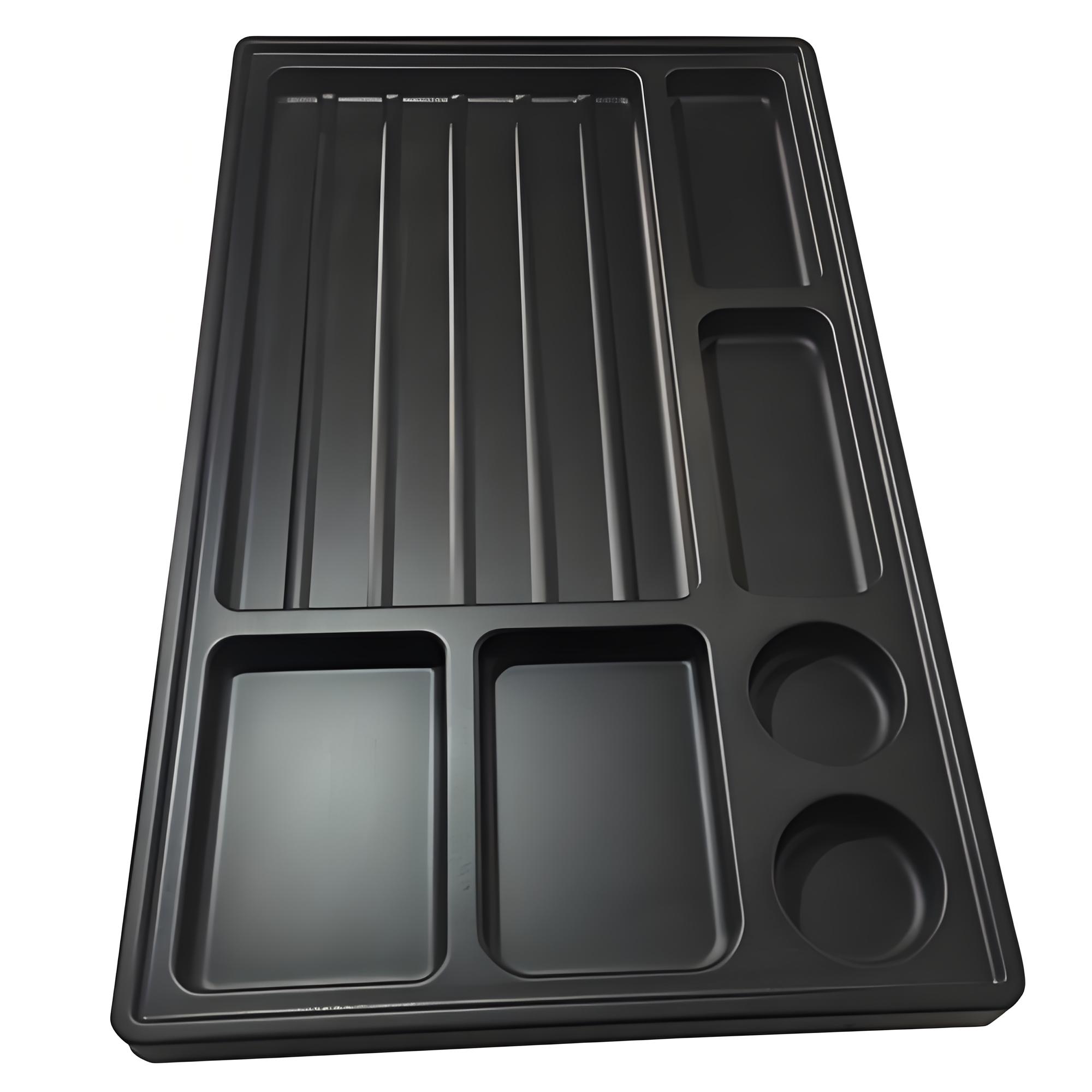- Home
- Capability
- Products
- About Us
- Service Industry
- Service Cases
- Video
- Contact Us
-
Language



ABS Vacuum Forming: Process, Applications, and Considerations
Process and Methods
The ABS vacuum forming process typically includes the following steps:
Heating: The ABS plastic sheet is heated until it becomes soft and pliable.
Vacuum forming: Using suction holes inside the mold, air is removed. The softened ABS sheet is then pulled tightly over the mold surface by vacuum pressure, forming a shape that matches the mold.
Cooling and solidification: The formed material is cooled, allowing it to solidify and retain its shape.
Trimming and finishing: The formed ABS product is removed, and its edges are trimmed. Additional precision machining may be done to meet specific requirements.
Common methods of ABS vacuum forming include concave mold forming, convex mold forming, sequential concave-convex forming, bubble-assisted forming, assisted convex mold forming, and vacuum forming with gas buffering devices.
Applications and Advantages
ABS vacuum forming is widely used in industries such as plastic packaging, lighting, advertising, automotive components, and decorative products. Its advantages include:
Efficient material usage: ABS offers a high material yield, reducing waste.
Lightweight and easy to transport: Molded products are light and convenient to handle.
Excellent sealing properties: Suitable for applications requiring airtight packaging.
Versatile forming capability: ABS can be shaped into complex forms to meet various design needs.
Attractive appearance: ABS provides a clean surface finish with good aesthetics, enhancing product appeal.
Suitable for automation: The process supports mechanized and automated production, increasing efficiency and consistency.
Precautions
To ensure high-quality forming, the following factors should be carefully managed:
Heating temperature: Must be properly controlled. Excessively high or low temperatures can affect the forming quality.
Mold design: Should be tailored to the product’s size and shape to ensure proper forming results.
Cooling rate: Should be uniform to prevent warping or cracking.
Trimming accuracy: Edges should be precisely trimmed to maintain appearance and dimensional accuracy.